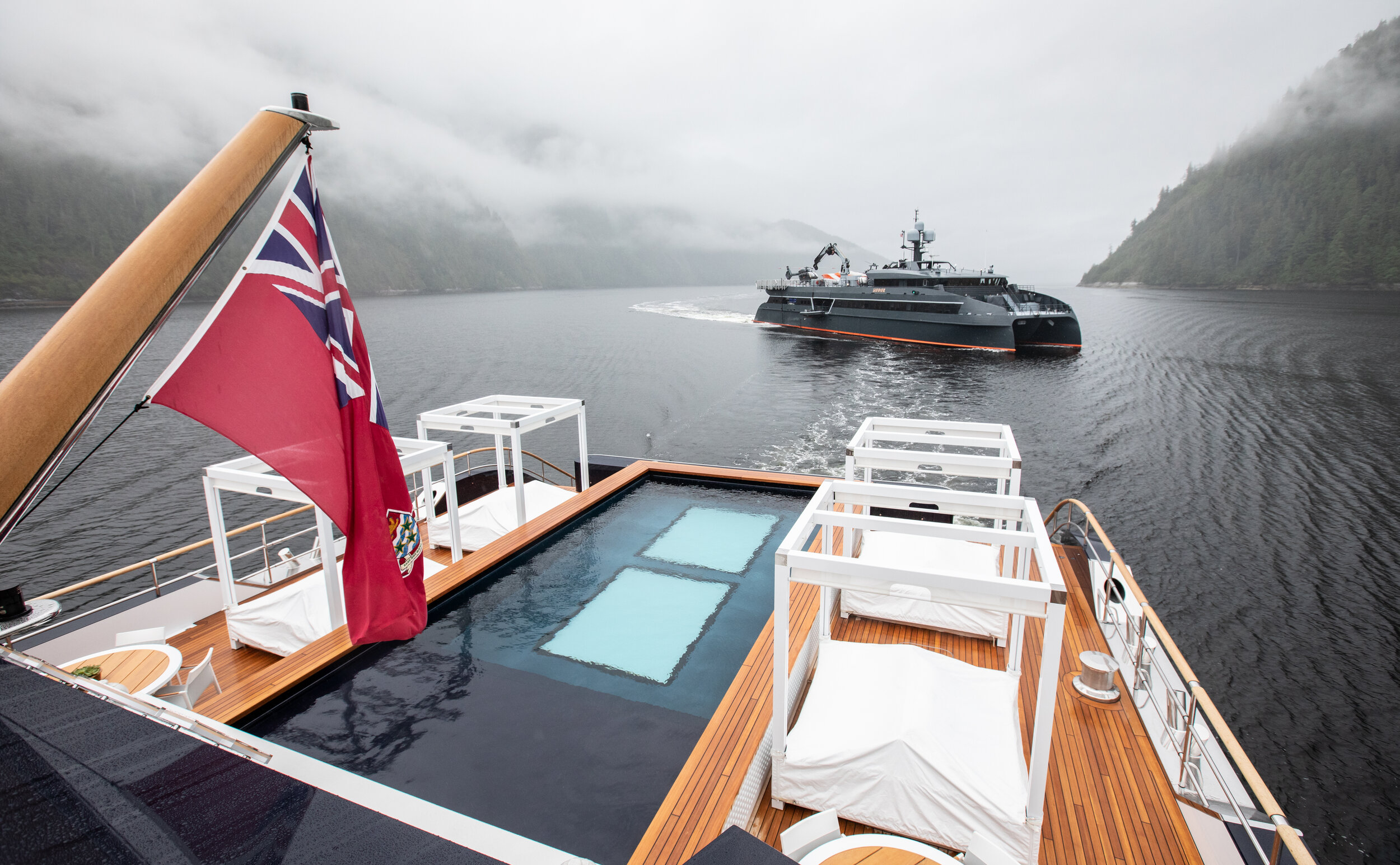Simultaneous Design of Superyachts and Support Yachts is a Growing Trend
SHADOWCAT’s Hodor with mother yacht Lonian (Clint Jenkins Photography)
Following recent reports of a booming superyacht industry, SHADOWCAT, an award-winning line of bespoke support yachts designed by Incat Crowther and YCTS Ltd., announces an emerging trend: Ultra High Net Worth Individuals (UHNWIs) are increasingly designing new superyachts and support yachts simultaneously. The decision to do so maximizes efficiency and reduces the need to compromise. The most recent example of this trend includes the headline-making $500M+ Project Y721 superyacht and its support yacht, commissioned by Amazon founder Jeff Bezos.
Orders for superyachts and accompanying support vessels have spiked during the COVID-19 pandemic, which has shifted the activities of UHNWIs from large galas and other society events to more private gatherings that can still deliver a “wow” factor. Superyachts anchored desirable locations are a natural fit to meet these demands. Additionally, UHNWIs are reportedly accumulating wealth in today’s economic climate, making the goal of owning a superyacht and shadow vessel quite attainable.
Shadow vessels, such as those in the SHADOWCAT line, support superyachts by efficiently carrying crew, assets and gear that make oceanic voyages more pleasurable and safer for owners and their guests. Additionally, as superyachts have expanded in size over the years, owners have turned to shadow vessels to provide access to shallow-water destinations and to carry “toys” for entertainment at sea.
SHADOWCAT support yacht Hodor’s aft deck, with view of the full helicopter pad and toy storage (Clint Jenkins Photography)
The rational for simultaneously designing superyachts and shadow vessel is growing. A few of the reasons include:
When superyacht and shadow vessel plans are designed together, they deliver the perfect balance of space, layout and carrying capacity.
Robert Smith, director of YCTS Ltd., says:
“By designing the vessels in tandem, designers can holistically plan the functional space of each vessel and how they will work together at sea. Depending on an owner’s specific requirements, the space aboard a superyacht can be reserved for guest accommodation and entertainment areas, while the support craft can house crew and carry assets, such as a helicopter and fully-sized hanger, multiple tenders, a submarine or jet skis and more.
When the vessels are designed and constructed simultaneously, time and expenses required for the overall project are reduced.
Smith explains:
“Time is money. Planning for both vessels up front maximizes everyone's efforts, reduces shipyard time and costs. In the past, owners built their superyachts first and ordered a shadow vessel later. This staggered approach forced them to endure costly and time-consuming retrofits to get what they really wanted all along. Today the whole superyacht process is being flipped to ensure long-term use cases are being considered earlier and to reduce these inefficiencies.”
There is no need to compromise on vessel designs.
Whether an owner wants space for hyperbaric chambers, submarines or water slides, designers will have the necessary space to make it possible. Smith shares:
“Concepting two yachts instead of one is a designer’s dream because they are always forced with balancing design integrity with necessary functions. Working on mother and daughter vessels together provides even more luxury and space for the owner’s enjoyment on the main vessel. Historic design constraints are lifted by offloading the more practical elements to shadow yacht.”
A view of shadow yacht Hodor from the pool deck of superyacht Lonian (Clint Jenkins Photography)
The only question remaining is who will make headlines next by commissioning orders for a superyacht and shadow next. By designing and building the vessels together, those in the market are more likely to obtain everything they desire, without sacrifice, more efficiently and more economically.



